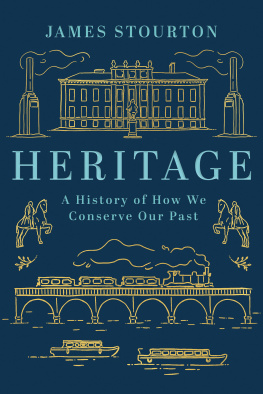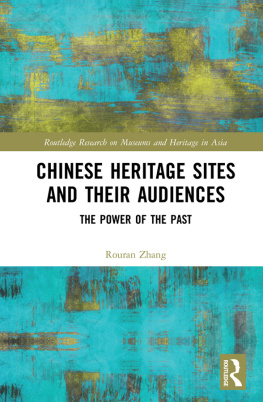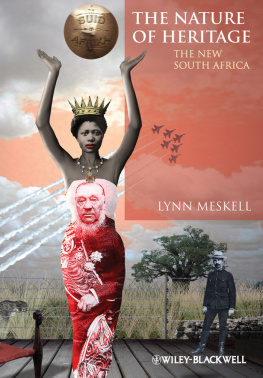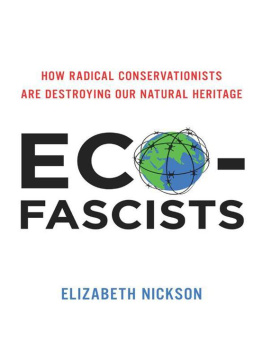First published 2009 by Left Coast Press, Inc.
Published 2016 by Routledge
2 Park Square, Milton Park, Abingdon, Oxon OX14 4RN
711 Third Avenue, New York, NY 10017, USA
Routledge is an imprint of the Taylor & Francis Group, an informa business
Copyright 2009 Taylor & Francis
All rights reserved. No part of this book may be reprinted or reproduced or utilised in any form or by any electronic, mechanical, or other means, now known or hereafter invented, including photocopying and recording, or in any information storage or retrieval system, without permission in writing from the publishers.
Notice:
Product or corporate names may be trademarks or registered trademarks, and are used only for identification and explanation without intent to infringe.
Library of Congress Cataloging-in-Publication Data
Our unprotected heritage : whitewashing the destruction of our cultural and natural environment / Thomas F. King.
p. cm. Includes bibliographical references and index.
ISBN 978-1-59874-380-7 (hbk. : alk. paper)
ISBN 978-1-59874-381-4 (pbk. : alk. paper)
1. Cultural propertyProtectionUnited States. 2. Historic preservationUnited States. 3. Historic sitesConservation and restorationUnited States. 4. Environmental protectionUnited States. 5. Nature conservationUnited States. 6. Environmental impact analysisUnited States. 7. Public interestUnited States. 8. Common good. I. Title.
E159.K565 2009 | 973dc22 |
2008048712 |
ISBN 978-1-59874-380-7 hardcover
ISBN 978-1-59874-381-4 paperback
D arkside Development Unlimited wants to build a new shopping mall, sports stadium, speedway, or pig farm in your town or your rural community. The project will devastate some piece of your heritage in the natural or built environmentyour neighborhood, or the landscape you love, the family farm, the hill where your tribal elders seek visions, the stream where everybody in your valley goes to fish. Darkside needs some kind of help from the federal governmentin other words, from you and me, us taxpayersto make its project happen. Maybe it needs a federal permit to fill a wetland, or maybe a new access road off the interstate. What can you do to fight the project or seek changes to protect what you treasure?
Realistically, Im sorry to say, not mucheven though there are impressive-sounding federal laws that seem to give your heritage, and everyones, a degree of protection. I say this based on forty-plus years of increasingly bitter experience with those laws and despite having written half a dozen books encouraging people to use them.
Those lawsthe National Environmental Policy Act (NEPA), the National Historic Preservation Act (NHPA), and othershave been around for almost half a century. They say that whenever a federal agency proposes to do something, or proposes to help or permit someone else to do something, that might have impacts on the natural or cultural environment, it has to consider what those impacts are and what it can do to avoid or reduce them. It has to factor them into its planning, consider alternatives, in some cases consult with the interested public about them. Over the decades, most other countries, as well as international organizations like the World Bank, have adopted similar requirements.
As a result, we now have bureaucracies overseeing environmental impact assessment (EIA) and cultural resource management (CRM), and we have well-heeled private companies doing EIA and CRM work under contract. What we do not have is an orderly system for actually, honestly considering and trying to reduce impacts on our natural and cultural heritage. Its all pretty much a sham.
Which is why, when Congress these days decides to do something like build a big fence along our southern border to keep out terrorists, its members dont even blink before waiving EIA and CRM requirements. The notion that these requirements serve an actual purposethat its a good idea to think about what damage may result from something youre thinking of doing, before doing ithas been quite lost. Thinking about impacts on the environment is seen as something thats nice to do if youve the time and leisure, but nothing that ought really to influence policy. Ive worked in CRM and EIA for over forty years, so I guess I have a vested interest in it, but I find the whole thing rather sad. There are good reasons to consider how something we plan may muck up the environment, and to do so before we undertake it. And in a democracy, citizens should have real opportunities to influence what government does, or lets others do, to their heritage. Its too bad, I think, that weve let things develop in such a way that were spending lots of money on mere public relations efforts, slathering the lipstick of environmental responsibility on the pigs of ill-considered development. We ought to change our system.
So, this book is about whats wrong with environmental impact assessment and its cousin cultural resource management, and what we might do to make them actually work, in the public interest.
ACKNOWLEDGMENTS
No one but I can be accused of having had much to do with the actual writing of this book. However, Im grateful to Mike Nixon for reviewing the manuscript to alert me to potential legal landmines, and I thank the many colleagues and correspondents who over the years have complained to me about the EIA and CRM systems. Theyve helped form my own ideas, and Ive shamelessly adopted many of their concerns.
Im also grateful to David Blake of the Buckland Preservation Society, to Nora McDowell and Courtney Coyle of the Fort Mojave Indian Tribe, and to Kathleen Hayden of the Backcountry Horsemen of California, both for ideas and inspiration, and for their comments on those parts of this book that deal with their issues and cases. I thank Ira Beckerman and Richard Galloway for their comments on my blog prcis, discussed in the afterword, and to John Perkins for comments on the overall manuscript. And as always, Im thankful to Mitch Allen and his colleagues at Left Coast Press for their encouragement, understanding, and initiative, including Carol Leyba for her skillful and patient editing, and Andrew Brozyna for cover art.
Tom King
Silver Spring, Maryland, USA
November 30, 2008










